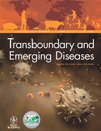
Transboundary and Emerging Diseases
Scope & Guideline
Empowering knowledge sharing in veterinary and medical sciences.
Introduction
Aims and Scopes
- Transboundary Animal Diseases (TADs):
The journal extensively covers the epidemiology, control, and prevention of transboundary animal diseases such as African Swine Fever, Foot-and-Mouth Disease, and others, focusing on their impacts on both animal and public health. - Emerging Infectious Diseases (EIDs):
Research on newly emerging infectious diseases that pose threats to animal and human populations is a primary focus, including studies on their origins, transmission dynamics, and control strategies. - One Health Approach:
The journal emphasizes a One Health perspective, integrating human, animal, and environmental health research to address zoonotic diseases and their implications for public health. - Molecular Epidemiology and Genomics:
The use of molecular techniques to understand the genetic diversity, evolution, and transmission mechanisms of pathogens is a key aspect of the research published in the journal. - Risk Assessment and Surveillance:
Studies that assess risks associated with disease outbreaks and the effectiveness of surveillance systems are highlighted, providing insights into monitoring and controlling infectious diseases. - Biosecurity and Control Measures:
Research on biosecurity practices, vaccination strategies, and other control measures to prevent disease transmission in livestock and wildlife is a significant component of the journal's scope. - Impact of Climate and Environment on Disease Dynamics:
The journal also explores how environmental factors, including climate change, affect the distribution and emergence of infectious diseases in animal populations.
Trending and Emerging
- Genomic Surveillance and Pathogen Genomics:
Recent publications emphasize genomic surveillance and the genomic characterization of pathogens, highlighting the importance of understanding genetic variations and their implications for disease control. - Environmental and Climate Impact Studies:
Research increasingly focuses on how climate change and environmental factors influence the emergence and spread of infectious diseases, reflecting a growing recognition of the interconnectedness of health and the environment. - One Health Integration:
There is a notable rise in studies applying the One Health approach, integrating human, animal, and environmental health perspectives to address complex health challenges. - Emerging Viral Diseases:
The journal is seeing an uptick in research centered around emerging viral diseases, particularly those that pose zoonotic threats, such as SARS-CoV-2 and its variants, reflecting the urgency of understanding these pathogens. - Predictive Modelling and Risk Assessment Techniques:
Advancements in predictive modelling and quantitative risk assessment methods are increasingly featured, aimed at enhancing surveillance and response strategies for infectious disease outbreaks. - Antimicrobial Resistance Studies:
Research on antimicrobial resistance in livestock and wildlife is gaining traction, particularly in relation to the implications for public health and food security.
Declining or Waning
- Classic Zoonotic Diseases:
Research focusing specifically on classic zoonotic diseases, such as rabies and brucellosis, has seen a decline, possibly due to the increased focus on emerging diseases and their complex transmission dynamics. - Traditional Livestock Diseases:
Studies on traditional livestock diseases that are well-characterized and have established control measures, such as older strains of foot-and-mouth disease, are becoming less frequent as newer threats gain attention. - Localized Case Studies:
There has been a reduction in localized case studies that do not offer broader implications for transboundary disease management, as the journal increasingly favors studies with global or regional significance. - Veterinary Pathology Studies:
Research purely focused on veterinary pathology without a strong connection to epidemiology or public health implications appears to be waning, as the journal aims to bridge veterinary and public health concerns.
Similar Journals

JAPANESE JOURNAL OF VETERINARY RESEARCH
Exploring new frontiers in veterinary research since 1965.The Japanese Journal of Veterinary Research, published by Hokkaido University, is a pivotal resource in the field of veterinary science, focusing on a wide array of topics that contribute to the advancement of veterinary research. Established in 1965, this esteemed journal has been at the forefront of disseminating innovative research findings and methodologies crucial for animal health and welfare in Japan and beyond. With an ISSN of 0047-1917 and recognized in the Q3 quartile of veterinary journals, it serves as a significant platform for both established researchers and emerging scholars, fostering a collaborative environment that aims to elevate veterinary practice. Although it operates under a traditional subscription model without open access, the journal's selectivity and rigorous peer-review process enhance the quality of published works, attracting attention from global audiences. Based in Sapporo, Japan, the journal continually strives to provide a vital forum for discussions that shape the future of the veterinary profession.

Kleintierpraxis
Transforming insights into impactful veterinary care.Kleintierpraxis is a prominent journal dedicated to the field of small animal veterinary science, published by M H SCHAPER GMBH CO KG in Germany. With an ISSN of 0023-2076, the journal aims to disseminate cutting-edge research, clinical findings, and advancements in veterinary practices affecting small animals. Although it is categorized within the Q4 quartile for Small Animals in 2023 and holds a Scopus rank of 20 out of 20, its role in providing valuable insights to practitioners, researchers, and students in veterinary medicine cannot be underestimated. The journal covers a wide range of topics pertinent to veterinary care, diagnostics, and treatment methodologies, offering an essential resource for understanding the complexities of small animal health. While currently not open access, Kleintierpraxis continues to be a vital contribution to the veterinary literature landscape from 1996 through 2024, fostering professional development and knowledge within the community.
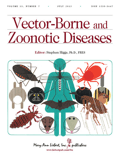
VECTOR-BORNE AND ZOONOTIC DISEASES
Advancing knowledge on the frontlines of infectious diseases.VECTOR-BORNE AND ZOONOTIC DISEASES is a prominent journal dedicated to advancing research in the fields of infectious diseases, microbiology, and virology, published by Mary Ann Liebert, Inc. With a rich history spanning from 2001 to 2024, this journal plays a critical role in disseminating cutting-edge research and insights regarding diseases transmitted by vectors and zoonotic pathogens. It has achieved notable rankings, including Q2 in the Infectious Diseases category and Q3 in both Microbiology and Virology as of 2023. The journal's emphasis on quality and relevance is further underscored by its established position—ranked 151st in Infectious Diseases and within the 43rd percentile in Virology according to Scopus. Although not an open-access journal, the publication ensures that its findings reach a broad audience of researchers, professionals, and students dedicated to tackling the challenges posed by these critical health issues. By providing a platform for innovative studies and discussions, VECTOR-BORNE AND ZOONOTIC DISEASES remains an essential resource for those at the forefront of disease research and public health strategies.
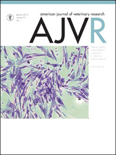
AMERICAN JOURNAL OF VETERINARY RESEARCH
Elevating Animal Welfare Through Scholarly ContributionsAmerican Journal of Veterinary Research, published by the American Veterinary Medical Association, serves as a cornerstone of the veterinary medical community, providing essential insights from 1945 to the present. With an ISSN of 0002-9645 and E-ISSN of 1943-5681, this esteemed journal focuses on a diverse range of topics within the veterinary field, contributing to the advancement of veterinary science through rigorous peer-reviewed research. Ranking in the Q2 category in Veterinary (miscellaneous) and Q3 in Medicine (miscellaneous) category as of 2023, it holds a respectable position in Scopus rankings, further emphasizing its impact in the field. While currently not an Open Access journal, its objective remains clear: to disseminate cutting-edge research that informs clinical practice and enhances animal health and welfare. The American Journal of Veterinary Research is invaluable for researchers, professionals, and students seeking to stay at the forefront of veterinary advancements and innovations.

Frontiers in Veterinary Science
Innovating research, transforming animal health.Frontiers in Veterinary Science is a premier open-access journal dedicated to the latest advancements and research in the field of veterinary science. Published by FRONTIERS MEDIA SA in Switzerland, the journal has been at the forefront of disseminating high-quality research since its establishment in 2014. With an impressive rank of #15 out of 194 in the general veterinary category and a high percentile of 92nd in Scopus rankings, it is recognized as a leading publication in veterinary medicine and related disciplines, maintaining a prominent Q1 quartile status as of 2023. The journal promotes the wide dissemination of knowledge through its open-access policy, ensuring that researchers, professionals, and students have unrestricted access to critical findings and innovations in veterinary science. Nestled in the vibrant academic landscape of Lausanne, Switzerland, Frontiers in Veterinary Science is not just a journal; it is a vital resource for advancing veterinary practices and improving animal health globally.
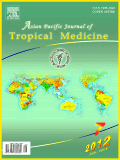
Asian Pacific Journal of Tropical Medicine
Empowering knowledge for a healthier tropical future.Asian Pacific Journal of Tropical Medicine, published by Wolters Kluwer Medknow Publications, stands at the forefront of research in the field of tropical medicine, contributing significantly to the global understanding of health issues prevalent in the Asian Pacific region. With an ISSN of 1995-7645 and an E-ISSN of 2352-4146, this esteemed journal has been an Open Access platform since 2011, ensuring that vital research is accessible to a broad audience. The journal boasts a commendable Scopus rank of 131 out of 636 in the General Medicine category, placing it in the 79th percentile and recognizing its influential contributions to the discipline. Based in Mumbai, India, the journal spans converged years from 2010 to 2024 and is categorized in the Q3 quartile for miscellaneous medicine as of 2023. Researchers, professionals, and students can leverage this journal to stay abreast of the latest findings and developments in tropical medicine, making it an indispensable resource in their academic and professional pursuits.
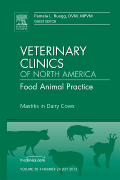
VETERINARY CLINICS OF NORTH AMERICA-FOOD ANIMAL PRACTICE
Empowering Practitioners with Cutting-Edge ResearchVETERINARY CLINICS OF NORTH AMERICA-FOOD ANIMAL PRACTICE is a premier peer-reviewed journal dedicated to advancing knowledge in the field of food animal veterinary medicine. Published by W B SAUNDERS CO-ELSEVIER INC, this journal serves as a vital resource for veterinarians, researchers, and students, facilitating the dissemination of high-quality, impactful research and reviews. With an impressive Q1 ranking in both the fields of Food Animals and Medicine, and a notable Scopus rank of 2 out of 39 in Veterinary Food Animals, the journal plays a critical role in addressing the complexities and advancements in food animal health. Although it is not an Open Access journal, subscribers have access to a wealth of articles that are pivotal to the profession. Founded in 1971, the journal continues to provide cutting-edge insights and support for effective practices in veterinary medicine through 2024 and beyond. Its commitment to excellence and relevance ensures it remains an indispensable source for the latest developments in the veterinary field.

CANADIAN JOURNAL OF VETERINARY RESEARCH-REVUE CANADIENNE DE RECHERCHE VETERINAIRE
Connecting Researchers, Elevating Animal HealthCanadian Journal of Veterinary Research - Revue Canadienne de Recherche Vétérinaire is a leading publication in the veterinary science community, published by the Canadian Veterinary Medical Association. Established in 1986, the journal serves as a crucial resource for researchers and practitioners alike, covering a broad spectrum of topics pertinent to veterinary medicine and animal health. With a current impact factor placing it in Q2 in the Veterinary (miscellaneous) category, it holds a rank of #85 out of 194 in Scopus for general veterinary research, demonstrating its influence and importance within the field. While the journal is not open access, it remains committed to the dissemination of high-quality research that fosters advancements in veterinary practice and education. Based in Ottawa, Canada, it strives to connect the international community of veterinary researchers and professionals through rigorous peer-reviewed articles that advance knowledge and methodologies in veterinary science.

PESQUISA VETERINARIA BRASILEIRA
Bridging gaps in veterinary research and public health.PESQUISA VETERINARIA BRASILEIRA is a premier scholarly journal that serves as a vital platform for disseminating high-quality research in the field of veterinary sciences. Published by REVISTA PESQUISA VETERINARIA BRASILEIRA, this Open Access journal has been a beacon of knowledge since 1997, allowing global access to its valuable content and fostering collaboration among researchers, professionals, and students. With an ISSN of 0100-736X and an E-ISSN of 1678-5150, it stands out for its commitment to enhancing the understanding of veterinary practices, animal health, and public health implications in the context of Brazil and beyond. As of 2023, it holds a Q3 category in veterinary miscellaneous and ranks at the 43rd percentile according to Scopus, reflecting its growing influence and contribution to the veterinary community. Based in Seropédica, Rio de Janeiro, this journal publishes research covering a wide range of topics, aiming to facilitate knowledge exchange and drive innovation within the field. Join the conversation and contribute to the advancement of veterinary science through your submissions and readership.
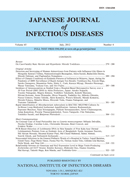
JAPANESE JOURNAL OF INFECTIOUS DISEASES
Pioneering insights for the prevention and control of infections.The Japanese Journal of Infectious Diseases, published by the National Institute of Infectious Diseases in Japan, serves as a vital platform for researchers, clinicians, and public health professionals committed to advancing the field of infectious disease science. With an ISSN of 1344-6304 and an E-ISSN of 1884-2836, this journal has maintained its academic rigor since its inception in 1961 and continues to contribute significantly to the global understanding of infectious diseases. The journal holds a Q3 ranking in the categories of Infectious Diseases, Miscellaneous Medicine, and Medical Microbiology as of 2023, reflecting its important role in disseminating impactful research. With many articles available through Open Access, it ensures wide accessibility to the latest discoveries and insights. Researchers can expect to find high-quality studies that address critical challenges in the control and prevention of infectious diseases, making this journal an essential resource for anyone engaging in this critical field.